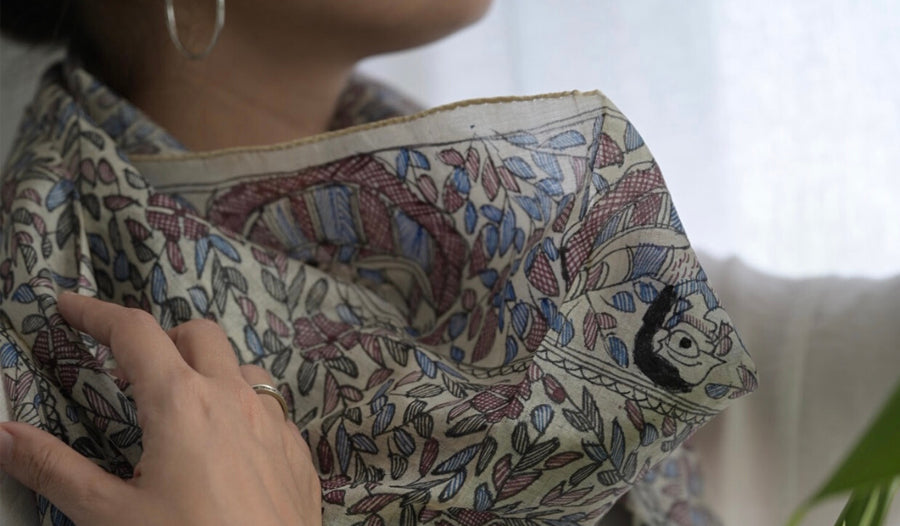
Madhubani: From Murals to Textiles
 Image: All images courtesy of Urban Medley
Image: All images courtesy of Urban Medley
Madhubani paintings can be traced back 2500 years to the time of Ramayana, one of the two major Sanskrit epics of ancient India. Predominantly practised by women in the Mithila region of Bihar, a state in Northern India, the main themes of the paintings related to the socio-cultural fabric of society, depicting love, religion and fertility.
Before starting to paint, the women would undergo a ritual of praying, calling upon the heavenly powers to help achieve excellence. They drew on mud walls or mud floors with fingers, twigs, brushes, nib-pens, and matchsticks, using natural dyes and pigments. It was practised on auspicious occasions and would inevitably be washed away with time. It is for this reason that the artform was never formally preserved but passed on from one generation to the next—each adding their own creativity and experimentation to enrich the art form.

In 1962 a visiting foreign artist was so enthralled by Madhubani murals that he persuaded the village women to paint on drawing paper so that he could take a piece of the artform away with him. Madhubani was then introduced to the world — the ephemeral art now immortalised on paper. Though the artists rarely signed their names, each had their own distinct style, painting directly onto surfaces without the infringement of a plan or a sketch. Madhubani meaning ‘Forest of Honey’ is an instinctive form of painting. No sketch is made before making the painting; hence it flows with the artist’s imagination. From paper, it was natural that the artform made the leap to textiles - now becoming wearable. Hand painted Madhubani sarees, stoles and scarves have proved incredibly popular and have in turn helped in the economic development of the region.

One of the key characteristics of Madhubani is that the entire painting is done by a single artist to maintain the uniformity of strokes. Paintings are characterized by bold colours that are achieved exclusively through the use of natural dyes, and geometrical patterns depicting valor, devotion, love, fertility, peace and prosperity. Symbolism plays a dominant role in the themes: fish symbolize fertility, procreation and good luck; peacocks often represent religion and love; and serpents the divine protectors.
Urban Medley is working with Madhubani artists from Bihar to promote the art through eri silk scarves. Versatile and complementary to a range of outfits, each scarf is a complete painting in itself.
Written by Shayonti Chatterji
